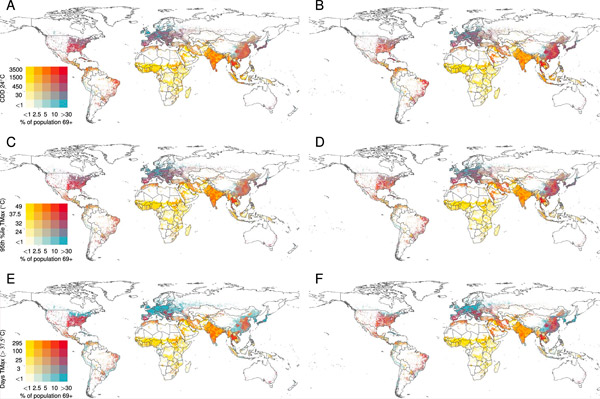By 2050, up to 246 million older adults could be at risk of heat exposure due to global warming
最近審查:14.06.2024

A team of earth scientists and environmental scientists from the CMCC (Euro-Mediterranean Climate Change Center) Foundation, together with two colleagues from Boston University, found evidence that up to 246 million people worldwide could be at risk of heat stress by 2050 year due to global warming and population aging.
In their paper published in the journal Nature Communications, the team describes how they used climate models to estimate global hot spots and compared them with population projections for the same areas.
The planet is becoming warmer due to anthropogenic emissions of greenhouse gases that enter the atmosphere. However, not all parts of the planet will warm to the same extent—some places, such as parts of Africa and Asia, are expected to become hotter than others.
Unfortunately, at the same time, the number of people over 60 is also growing - their number is projected to double by 2050, with many of them living in Asia and Africa - countries where air conditioning is rare.
In this new study, the team noted that while much research has been done to better understand the effects of extreme heat on older people, little has been done to figure out how many of them may be at risk in the coming years. To find out, they looked at both climate and demographic models out to 2050.
Climate models have shown that the average number of extremely hot days worldwide will increase from about 10 to 20 over the next 30 years. The researchers also found that these hot days will get hotter depending on where they occur.

Global intersection of aging and heat exposure in the current climate (left column) and around 2050, SSP2(45) (right column).
A, B. Proportion of population aged 69+ years exposed to annual Cooling Degree Days (CDDs).
C, D. Annual temperatures corresponding to the 95th percentile of local extreme thermal forcing (TMAX95).
E, F. Annual number of days with TMAX > 37.5°C.
Source: Nature Communications (2024). DOI: 10.1038/s41467-024-47197-5
And demographic models have shown that approximately 23% of people over 69 will live in parts of the world that will experience these dangerously high temperatures - today the percentage is just 14%.
Overall, the team found that between 177 million and 246 million people over 69 could live in places that regularly experience dangerously high temperatures by 2050, putting many at risk of heat-related illnesses. Or death.

